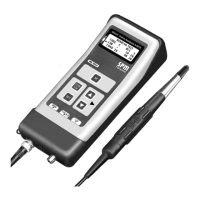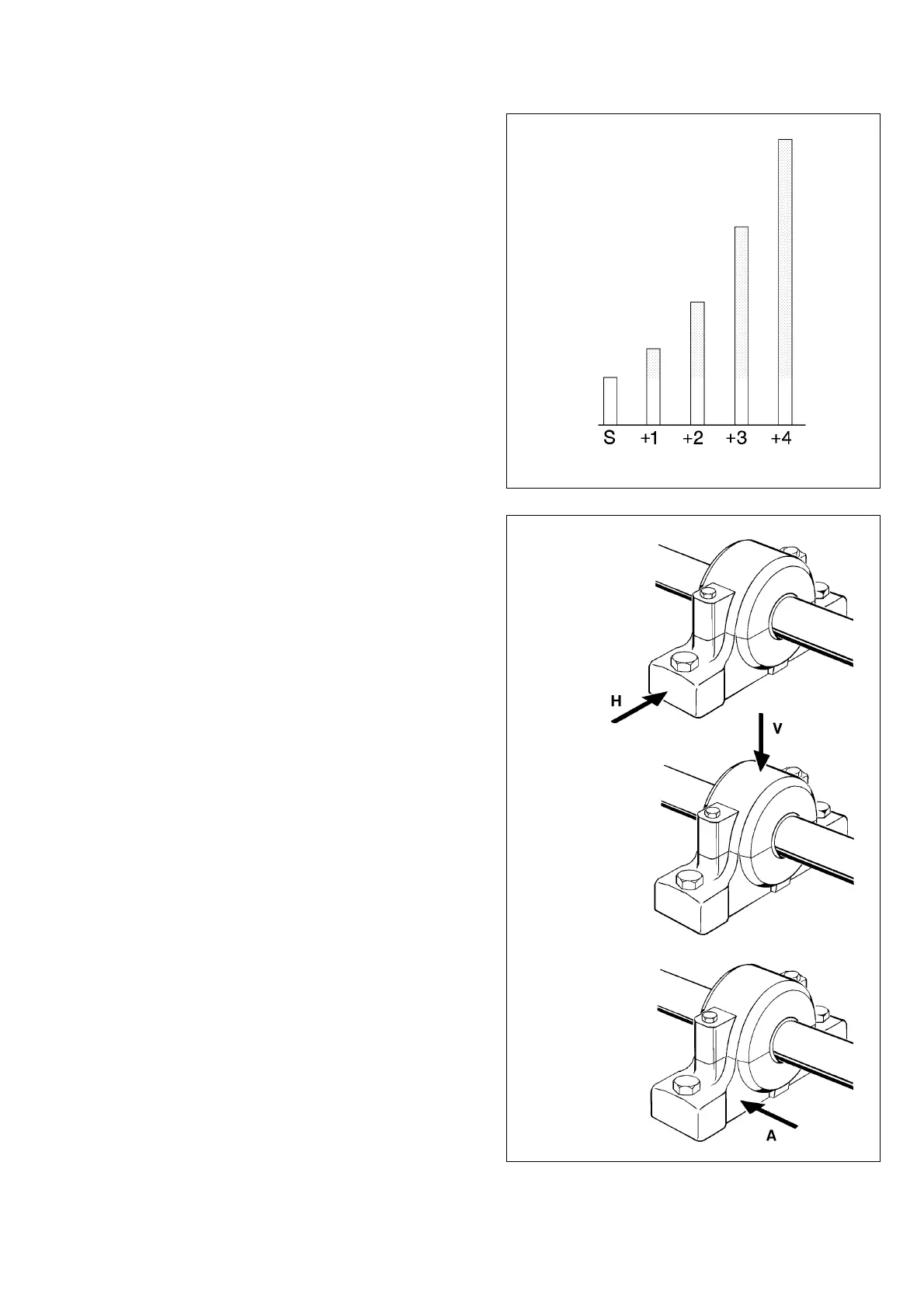65
Technical data are subject to change without notice.
ISO 9001 certified. © Copyright SPM 1996-9. 71411.B
SPM Instrument AB • Box 4 • S-645 21 Strängnäs • Sweden
Tel +46 152 22500 • Fax +46 152 15075 • info@spminstrument.se • www.spminstrument.se
Evaluation of Vibration Readings
Fig. 13
The A2010 is primarily used for a general assessment
of machine condition, and is not intended for a de-
tailed fault analysis. However, by measuring in several
points and/or directions one can get a good indica-
tion of the type of machine fault which causes the
increased vibration level (see evaluation chart on the
next page).
Report Changes in Steps
The main purpose of vibration severity measurements
is to detect a significant increase or decrease in the
vibration level of a machine and direct maintenance
work accordingly. The important data is the degree of
change, not the actual vibration reading. Reporting
the change in "steps up" or "steps down" is the
simplest way of indicating the extent and urgency of a
maintenance problem.
One step is the space between two lines on the fol-
low-up form. For all machine classes at any level, it
represents a 1.6 times increase (decrease) from the
previous reading or, if the change is gradual, from
the original norm value.
A one step change is generally regarded as signifi-
cant. At this stage, tightening a few bolts or adjusting
a belt may be sufficient to get rid of the excess
vibration. A two step change (= one condition zone)
should be investigated. Maintenance is urgent if vi-
bration is up three steps. If the increase is four or
more steps, shut down the machine.
Basic Fault Analysis
With several measuring points on a machine and meas-
urements in three direction, it is possible to make a
simple fault analysis. As a general rule:
• Out-of-balance forces rotate with the shaft and
cause radial vibration acting in all directions
within the plane of rotation. Of the two radial
measure-ments (V and H), the reading in the
horizontal direction (H) is most representative of
balance conditions.
• A radial reading in the vertical direction (V) tends
to give information about structural weakness
.
• Axial vibration, along with the line of the shaft,
is normally caused by faulty alignment, badly
assembled couplings or bent shafts.
Fig. 12
Maintain
Danger!!
Repair!
Report
Vibration increase in steps
Mainly
balance
Structural
weakness,
(balance)
Mainly
alignment

